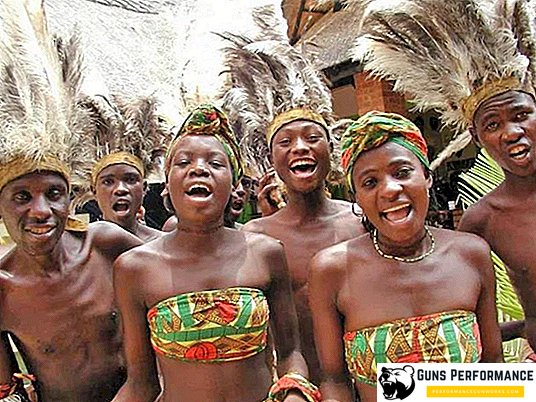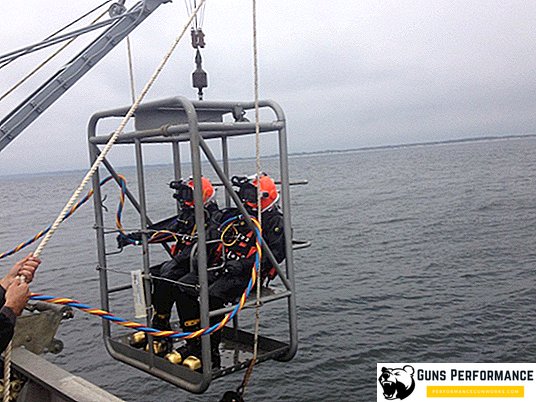Uganda is an African country, famous for its cannibal president Idi Amin. The leader became famous not only for collecting the heads of his enemies, but also eating their meat. These times are far in the past. Currently, the president of Uganda is elected by secret ballot. To register as a candidate for the post of head of Uganda, you must collect at least 100 voter signatures in 66% of the country's districts. In an election, at least 50% of voters must vote for the applicant. If the candidates do not get this number of votes, then the second round of elections is held. Only 2 candidates participate in it. The term of presidency is 5 years. Previously, there was a limit on the number of terms of election, but in 2005 it was removed, holding a referendum. Currently, the post of president of Uganda is Yoweri Museveni.
The development of the country until the beginning of the XX century

The first tribes of pastoralists and farmers appeared on the territory of modern Uganda around the 4th millennium BC. Until this time, there lived wild tribes involved in gathering and hunting. The savages went into the jungle, and the newcomers began to explore new possessions:
- In the 15th century AD, the first state of Kitara was founded in Uganda, founded by the Chvezi tribes;
- At the end of the 15th century, the Chvezis lost the war to the ethnos of Bito and were forced to migrate further south of the continent;
- At the beginning of the 16th century, the Bunoro state was created by the Bito, which suffered from internecine wars until the 18th century;
- In the 18th century, the state of Buganda arose. It was founded by Prince Kimera, who set a goal to unite as many tribes and lands as possible under his rule.
Prince Kimera became the tavern (ruler) of Buganda. The power of the taverns was not hereditary; therefore, according to the elders, the representatives of the Bugandian clans became the most worthy rulers.
At the beginning of the XIX century, Buganda became a powerful state by African standards. Kabaks contained a strong army and a kind of fleet on Lake Victoria. The troops began to seize the surrounding land, the most affected state of Bunyoro, which could not unite in front of the Bugandy threat. The rulers successfully carried out their tasks - the territory of Buganda grew.
By the end of the 19th century, Europeans began to come to Buganda in large numbers. Interested in huge people and missionaries:
- Protestants from the UK;
- Catholics from France, Spain and Portugal;
- Muslims from the island of Zanzibar.
The main task of the missionaries was to convert the local people, especially the rulers.
As a result, Muslims failed to resist the powerful Protestant and Catholic churches and left the region. The missionaries managed to make a tavern a European puppet. In 1892, the two forces could not agree among themselves, a local conflict arose. The Protestants supported the UK, and the Catholics - Germany. The British reinforced their territorial claims with a huge amount of military equipment and weapons. Germany refused to Buganda, resulting in the emergence of a British protectorate of Uganda. This name comes from the name of the state of Buganda in Swahili.
Europeans began to expand their influence, using Uganda’s army as a strike force. Armed with British weapons black warriors subjugated the whole territory of Bunyor and conquered the northern lands inhabited by the Acholi tribes. In order to avoid conflicts with the local population, the British authorities in 1900 gave the country complete autonomy in internal affairs. This completely suited the local ruling elite. At such an unprecedented step for England, the government went after the insurrection of the Nubian mercenary units, during which the rebels did not receive support from the Ugandan army.
Uganda in the 20th century, gaining independence from England

Representatives of the Baganda population played a major role in local government. It was an elite that had privileges in relation to other nations. The rest of the land and the tribes living on them were in secondary roles, as they joined Uganda by force. The elite received a wide range of powers from the British Crown:
- Tax collection;
- Publication of decrees;
- Missionary activity;
- Trade advantages and other features.
This caused discontent among representatives of other ethnic groups. In 1907, an uprising broke out in the Bunoro Territory.
By 1915, many cotton plantations had emerged in the protectorate of Uganda, and the region’s economy was self-sustaining. Britain decided to limit the influence of local large landowners and at the end of 1920 began to redistribute land. The main emphasis was placed on small farms. A number of Indians moved to Uganda who seized the entire trade, which provoked discontent among the local population.
After World War II, in 1949, the Baganda tribes began to revolt, demanding that the English government remove the Indians from the country's economy. The protesters were not supported by the Kabaka Mutes II, which was distinguished by its political passivity. In the early 1950s, Governor Andrew Cohen conducted a series of reforms:
- Eliminated the Indian monopoly in trade;
- Allowed to form a full-fledged African representation in the Legislative Council;
- Allowed local aristocrats to directly participate in state foreign policy.
Now local rulers and deputies could directly protect the rights and interests of their citizens.
In 1962, Uganda gained independence. It was originally planned to create a federation consisting of:
- Uganda;
- Kenya;
- Tanzania.
This project was at odds with the interests of Mutesa II, who feared that white settlers from Kenya would come to power. The British government forced the pub to go into a short-term link. Soon the ruler of Uganda returned a real fighter for the happiness of the people. He won the right to remove any tribal leaders in Uganda.
In 1962, the kabak became the first president of the country. In 1966, he was overthrown by Prime Minister Obote, who became the second president of Uganda. The new leader immediately faced political difficulties: most historical kingdoms began to insist on giving them autonomy. This was at odds with Obote’s plans; he dreamed of building a strong centralized state. In 1966, a referendum was held in Uganda, with the result that territories belonging to it at the end of the 19th century were returned to Uganda. The President began to strengthen his power:
- Suspended the constitution;
- He sent the leaders of large tribes into exile;
- He arrested all the ministers who opposed Obote with corruption charges.
Kabak tried to resist, raised a rebellion, but it failed miserably. Former king had to hurry to leave the country.
The dictatorship of Idi Amin and the formation of the state in our days

The years of government of Obote are marked by the instability of the Ugandan economy. The closest associate of President Idi Amin did not hide his opinion regarding state policy. Fearing his arrest, the former military took advantage of the departure of Obote and seized power in the country. Amin's reforms were clearly dictatorship:
- Established military regime;
- All political rivals of the president are executed;
- Inter-ethnic conflicts intensified.
Obote did not leave attempts to regain power. In 1972, he and his associates invaded Uganda, but was defeated by Amin’s superior forces. Having fled to Tanzania, the former leader of the country continued to develop plans for the return of power. Amin demanded the release of his opponent from Tanzania. After the refusal of the authorities, he launched a border war with Tanzania in 1978.
Obote, taking advantage of the outbreak of hostilities, created the Army of National Liberation of Uganda. In 1979, the joint army of Obote and Tanzania took the capital Kampala with a fight. Amin managed to escape to Libya and soon settled in Saudi Arabia.
During these years, the political star Museveni, who organized his Army of national resistance, rose. After the fall of the regime of Amin Museveni, he went underground, continuing the guerrilla war, but against Obote. He relied on the support of nationalities:
- Bunoro;
- Baganda;
- Banyankole.
In 1984, the militants belonging to the Acholi ethnic group considered themselves to be disadvantaged, since most of the leading posts in the Ugandan army were occupied by representatives of the Langi ethnic group. They carried out a military coup, forming their own interim government. Yoweri Museveni brought his troops on alert and with a sudden blow defeated General Tito Okello's army. In 1986, Museveni became the president of Uganda.
The new leader of the state faced the problem of centralization of power. It was necessary to unite the people at any cost. The president was able to resolve this issue:
- Forbidden to form new parties;
- Included representatives of the Democratic Party and Congress in the government;
- Restored royal power in the regions of the country.
Most of the reforms were of a formal nature, and the ban on the activities of some parties caused a violent reaction from the opposition.
In 2000, the country held a referendum on the introduction of a multiparty system. It turned out that the population supports the policy of their president. In 2005, the opposition insisted on holding another referendum on this issue. As a result, the ban was lifted. Yoweri Museveni was elected president for several terms in a row. The last elections were held in 2016.
Constitutional basis of the state

The present constitution of Uganda was adopted in 1995 by the Constitutional Assembly. In 2005, it was revised and made some amendments:
- One person can hold the presidency for an unlimited number of terms in a row;
- All the results of the national referendum are fixed;
- A multiparty system has been introduced.
The Ugandan President is obliged to make all amendments to the constitution (this is enshrined in the main document of the country).
To adopt an amendment to the legislative assembly, you must:
- 2/3 deputies must vote "for";
- The amendment must be approved by a national referendum;
- If the referendum was not held, members of district councils vote for the amendment.
For the entry into force of the amendments adopted, the signature of the president is sufficient.
All adult citizens of the country can participate in the election of the head of state. Every resident of the country has the right to take part in the management of Uganda, independently or through deputies. After 2005, an amendment appeared in the constitution allowing citizens to influence the policies of the authorities by peaceful means. It can be either spontaneous demonstrations or participation in meetings of political organizations. Every citizen has the right to receive any information, except in cases where this may jeopardize the security of the state. It is prohibited to obtain information that may affect the privacy of other citizens.
The Constitution provides Ugandans with the right to:
- Personal life;
- Free paid work;
- Clean environment;
- Protection of their interests and private property.
After 2005, the Ugandan constitution acquired the features of European legislation.
Presidential Impeachment Procedure

The present president of Uganda has ruled since 1986. His last inauguration took place in 2016. Museveni has been in power for over 30 years and has dictatorial powers. Despite this, the constitution spells out in what cases an impeachment procedure is provided for:
- Economic damage;
- The outbreak of ethnic conflicts;
- Violation of the oath and the foundations of the constitution.
Although the parliament is obedient to the will of the president, 2/3 of the deputies, having voted for impeachment, can begin this procedure. After a positive result of the vote, the Speaker of Parliament is obliged to notify the Supreme Judge. He must convene a tribunal consisting of three judges of the Supreme Court. The court decides on the guilt of the president and is removed from power. Another way to remove a president is his physical or mental illness. In this case, the parliament votes for removal, but instead of the tribunal, a medical consultation of five doctors is convened.
Parliament has the right to show a vote of no confidence in the ministers. For this, 1/3 of the deputies' votes is enough. A petition is signed, signed by the president after consideration, and the vote is passed after the vote in parliament. The Minister may either voluntarily leave the post or be dismissed by the President.
Status and Responsibilities of the Ugandan President

The head of state is also the Supreme Commander of the armed forces. The full power of the executive branch belongs to the president, he can appoint ministers helping to lead the state. Duties of the head of state:
- Conclusion of international treaties;
- Appointing heads of diplomatic missions;
- Declaration of war (you need the consent of at least 2/3 of the deputies of parliament);
- Entering a state of emergency;
- Pardons and amnesties.
Presidential orders are not legislative in nature.
The institute of vice presidency has been around for a long time in Uganda. The deputy head of state is appointed by the president and approved by a majority vote of the deputies of parliament. The vice-president can solve any tasks in the absence of the head of state. If the president dies in his post, his deputy will become the interim head of state for up to 6 months, then elections should take place in the country. Uganda does not have the post of prime minister, his functions are performed by the Cabinet Secretary.
In 2017, President Museveni signed a law that lifted the age limit for a presidential candidate. Now the head of state can be a person who has reached the age of 75 years. This amendment was made to the constitution. In the elections of 2021 Museveni can stand as a candidate. Judging by the political situation in the country, if the president does not fail his health, he will be elected once again. This amendment has caused numerous disputes not only among ordinary people, but also among members of parliament. Several deputies moved from words to deeds and fought right at the parliament meeting.
List of presidents of Uganda and the residence of the head of state

The presidency institute appeared in Uganda in 1962. Prior to that, the head of the country was a tavern. List of presidents:
- 1962-1966 - Sir Edward Mutes II. Prior to this was the tavern (king) of the country. Despite the fact that he always adhered to the policy of neutrality, in early 1953 he demanded the separation of Buganda from the colonial British possessions. He was expelled, for which he received popular love. Overthrown by his prime minister in 1966. In 1969, he died in London under mysterious circumstances. According to the official version - alcohol poisoning;
- 1966-1971 - Milton Obote. After his official election, proclaimed "the power of a simple black man." Could slightly improve the economic situation in the country. He was overthrown by his closest ally Amin;
- 1971-1979 - Idi Amin. He became famous not only as a tough authoritarian ruler, but also as a cannibal. Overthrown by Milton Obote in 1979;
- 1980-1985 - Milton Obote. The second presidential term was held in a dictatorial mode. He executed about 500,000 people in 5 years of rule. Was overthrown in 1985;
- 1986 is our time - Yoweri Museveni. One of the rebel leaders in the early 1980s. Captured power by force.
The board of the last president noted a slight stabilization of the regional economy.
Museveni has several official residences. The most famous one in which the president’s reception is located is the palace in Entebbe. This complex was built in 1966, spending about 87 million US dollars on it. The area of the palace then was about 1,500 square meters. In 2007, the presidential residence decided to repair and expand. The reconstruction was grandiose - the area of the palace complex increased to 17,000 square meters.
The history of Uganda is full of bloody events. Currently, most of the country's citizens live below the poverty line, while the ruling elite is buried in luxury. Президент следит за народными настроениями, жёстко подавляя любые митинги и протесты.












